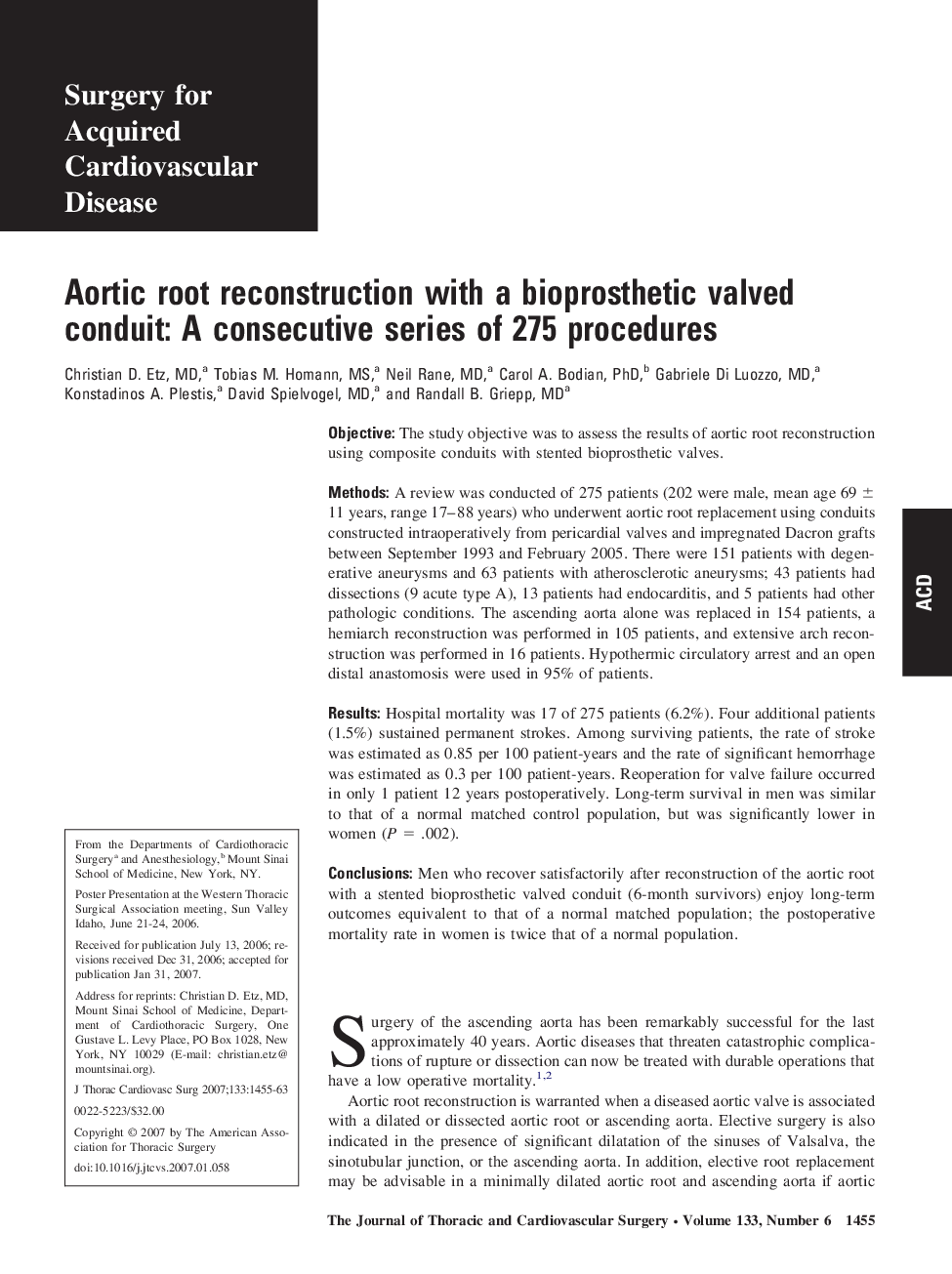| Article ID | Journal | Published Year | Pages | File Type |
|---|---|---|---|---|
| 2983826 | The Journal of Thoracic and Cardiovascular Surgery | 2007 | 9 Pages |
ObjectiveThe study objective was to assess the results of aortic root reconstruction using composite conduits with stented bioprosthetic valves.MethodsA review was conducted of 275 patients (202 were male, mean age 69 ± 11 years, range 17–88 years) who underwent aortic root replacement using conduits constructed intraoperatively from pericardial valves and impregnated Dacron grafts between September 1993 and February 2005. There were 151 patients with degenerative aneurysms and 63 patients with atherosclerotic aneurysms; 43 patients had dissections (9 acute type A), 13 patients had endocarditis, and 5 patients had other pathologic conditions. The ascending aorta alone was replaced in 154 patients, a hemiarch reconstruction was performed in 105 patients, and extensive arch reconstruction was performed in 16 patients. Hypothermic circulatory arrest and an open distal anastomosis were used in 95% of patients.ResultsHospital mortality was 17 of 275 patients (6.2%). Four additional patients (1.5%) sustained permanent strokes. Among surviving patients, the rate of stroke was estimated as 0.85 per 100 patient-years and the rate of significant hemorrhage was estimated as 0.3 per 100 patient-years. Reoperation for valve failure occurred in only 1 patient 12 years postoperatively. Long-term survival in men was similar to that of a normal matched control population, but was significantly lower in women (P = .002).ConclusionsMen who recover satisfactorily after reconstruction of the aortic root with a stented bioprosthetic valved conduit (6-month survivors) enjoy long-term outcomes equivalent to that of a normal matched population; the postoperative mortality rate in women is twice that of a normal population.
